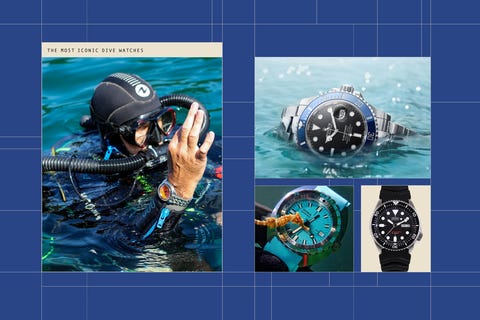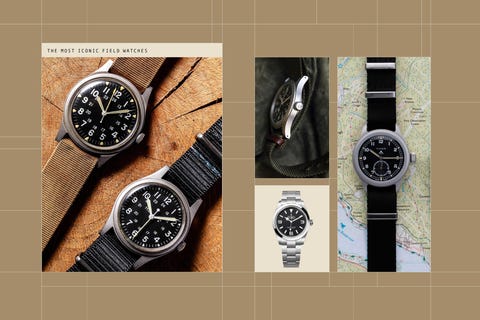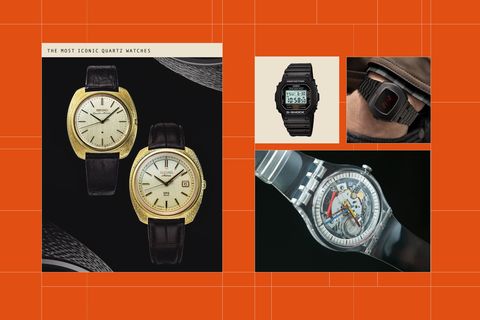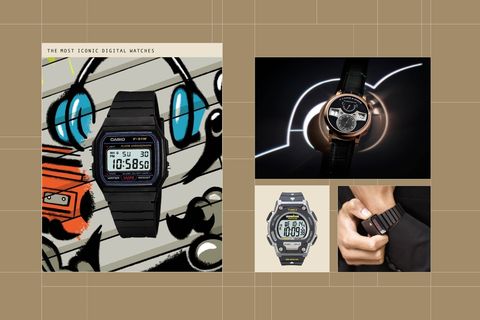Wristwatches have been around for well over a century now, having first come into popularity toward the end of the nineteenth century. Throughout the course of the twentieth century and even into the twenty-first, a number of brands from around the world — though mostly in Switzerland and Japan — have released watches that, for one reason or another, have settled in our collective consciousness as design icons.
The most iconic watches of all time are as diverse as they are recognizable. From practical time-tellers born in the crucible of war to stylish accessories designed to elevate any outfit to purpose-built tools made for flying airplanes, racing automobiles and diving to the depths of the ocean, these legendary timepieces have all become more than mere instruments for telling time. They’re trendsetters, travel companions, personal keepsakes and indispensable pieces of kit. These are the most iconic watches ever made.
The Most Iconic Pilot’s Watches
While not necessary for flying a plane today, the history of aviation wouldn’t be what it is without these essential tools. From simple WWII-derived Fliegers to busy-looking chronographs and time zone-jumping GMTs, pilot’s watches come in many styles and sizes (though they do tend to be on the larger side for both readability and usability) but all were originally designed to aid aviators in their daring, high-flying profession.
The Most Iconic Dive Watches
Is there a more popular traditional watch style today than the dive watch? Although most people wearing a diver these days aren’t strapping it on over a wetsuit, this style of watch has nevertheless proliferated since its debut in the early 1950s to become a critical piece in every watch enthusiast’s collection. Their robust build, versatile and attractive looks and inherent cool factor all suggest that the dive watch’s favored status is here to stay.
The Most Iconic Racing Watches
Nothing quite combined panache and danger like the golden age of motorsports, embodied by the race-timing tools that sprang from the era. In the 1960s and ’70s especially, daredevil drivers wore exotic chronograph watches that not only timed their laps and calculated their speed, but also allowed them to showcase their own personal style as designs became funkier and more flamboyant. If you’ve got the need for speed, these are the watches for you.
The Most Iconic Field Watches
While divers and pilot’s watches also have military roots, no style of watch is as associated with wartime innovation as field watches. This basic time-telling style, which prioritizes legibility and toughness above all else, was born in the trenches of WWI and came into its own during the Second World War before finding a new life on the wrists of adventurers, alpinists and explorers in the post-war era of the twentieth century.
The Most Iconic Dress Watches
One of the oldest styles of wristwatch, dress watches are what you wear when you want to look your best; the pièce de résistance of any well-put-together outfit. But while their smaller size, minimalist features and formal looks seem tailor-made for, well, tailor-made clothing, many of the best-known dress watches actually have sporting origins, making them more capable — and interesting — than you may have known.
The Most Iconic Quartz Watches
While sometimes frowned upon by enthusiasts, quartz watches remain a critical piece of timekeeping history and are largely to thank for the accuracy we take for granted today. The first quartz wristwatches appeared at the tail end of the 1960s and by the 1980s had become so inexpensive and accurate that they nearly caused the extinction of the mechanical watch industry — but we can’t fault them for being that good at their job.
The Most Iconic Digital Watches
From the futurism of 1980s quartz watches to today’s smartwatches, digital watches continue to show how wristwatches can adapt to changing tastes and needs. Seeing the time displayed numerically rather than on an analog clock face was a revelation just a few decades ago, but now it has become so ubiquitous that it’s how most of us read the time throughout the day, whether on our phones, our computer screens or, of course, on our wrists.








